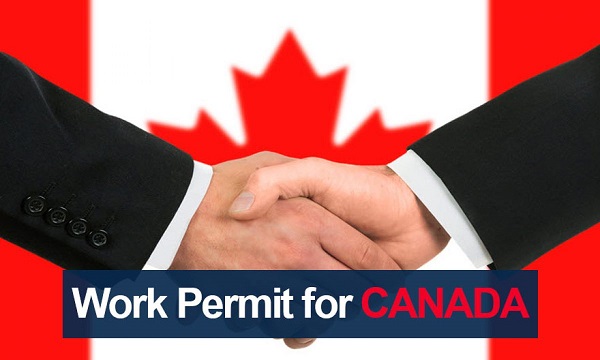Obtaining a Italian work visa is essential for individuals who wish to work and reside in Italy. This comprehensive step-by-step guide will walk you through the process of obtaining an Italian work visa, providing you with the necessary information and resources to make the application procedure smoother.
Step 1: Determine the Appropriate Visa Category
The first step is to identify the correct visa category that aligns with your intended employment in Italy. Some common visa categories include self-employment visa, company-sponsored visa, and intra-company transfer visa. Each category has specific requirements and eligibility criteria, so it’s important to choose the one that best suits your situation.
Step 2: Research Visa Requirements
Once you have identified the appropriate visa category, thoroughly research the specific requirements associated with that category. The requirements may vary depending on your nationality, the type of job, and the duration of your stay in Italy. Common requirements include a valid passport, employment contract, proof of accommodation, health insurance, and financial documentation.
Step 3: Secure a Job Offer
Before applying for a work visa, it is crucial to secure a job offer from an Italian employer. This step involves conducting a job search, networking, and applying for positions that match your skills and qualifications. It is advisable to communicate with potential employers early in the process to ensure they are willing to support your visa application.
Step 4: Employer’s Role
Once you have a job offer, your prospective employer plays a vital role in the visa application process. They will need to provide certain documents, such as an official letter of employment or a job contract, stating the duration and conditions of your employment in Italy. Additionally, they may need to demonstrate that no Italian or EU citizen is available for the job, complying with the local labor market regulations.
Step 5: Gather Required Documents
Compile all the necessary documents as per the specific visa category requirements. The general documents typically required for an Italian work visa application include:
- Completed visa application form.
- Valid passport with at least six months’ validity beyond the intended stay.
- Passport-size photographs.
- Proof of accommodation in Italy.
- Employment contract or job offer letter.
- Proof of qualifications and professional certifications.
- Financial documentation to demonstrate you can support yourself during your stay.
- Health insurance coverage details.
Step 6: Visa Application Submission
Submit your visa application and the accompanying documents to the Italian consulate or embassy in your home country. Make sure to follow the instructions provided by the respective consulate/embassy and pay the application fee, if applicable. It is advisable to submit your application well in advance of your intended travel date, as processing times may vary.
Step 7: Attend Visa Interview (if required)
Depending on your nationality and visa category, you may be required to attend a visa interview. During the interview, be prepared to answer questions about your employment, qualifications, and intentions in Italy. Provide honest and concise answers to the consular officer to establish the credibility of your application.
Step 8: Visa Processing and Approval
Once your application is submitted, it will undergo a thorough review by the Italian authorities. The processing time can vary, so it is important to be patient. If your application is approved, you will be issued a work visa or a “nulla osta” (authorization) that allows you to work in Italy. The visa may be issued for a specific duration and may have certain conditions attached, such as restrictions on changing employers.
Step 9: Travel to Italy
Upon receiving your work visa, make travel arrangements to Italy. Ensure that you carry all the necessary documents, including your passport, visa, and proof of accommodation, when you travel. It is also advisable to make copies of your important documents and keep them in a safe place in case of loss or theft.
Step 10: Registering with the Local Authorities
Within eight days of arriving in Italy, you must register your presence with the local authorities. Visit the local Anagrafe (Registry Office) or Questura (Police Headquarters) to complete the registration process. Provide them with your passport, visa, and any other required documents. This registration is important for legal compliance and obtaining a residency permit (Permesso di Soggiorno).
Step 11: Obtain a Residency Permit (Permesso di Soggiorno)
After registering with the local authorities, you will need to apply for a residency permit, known as Permesso di Soggiorno. This permit allows you to legally reside and work in Italy for an extended period. The application process may require additional documents, such as proof of address, proof of employment, and payment of fees. Follow the instructions provided by the local authorities to complete the process.
Step 12: Fulfill Additional Requirements (if applicable)
Depending on your specific visa category and circumstances, you may have to fulfill additional requirements. For instance, certain professions or regulated industries may require you to obtain specific licenses or certifications. It is essential to research and comply with any additional requirements related to your employment or industry.
Step 13: Renewal of Work Visa and Residency Permit
Work visas and residency permits in Italy are typically granted for a limited duration. If you intend to stay longer, you will need to renew your visa and residency permit before they expire. The renewal process may involve providing updated documents, proof of continued employment, and paying the necessary fees. Be proactive and start the renewal process well in advance to avoid any disruptions in your legal status.
Conclusion:
Obtaining an Italian work visa requires careful planning, thorough research, and adherence to the specific requirements for your visa category. By following this comprehensive step-by-step guide, you can navigate the application process with confidence. Remember to stay organized, communicate effectively with your prospective employer, and comply with all legal obligations to ensure a smooth transition to working and living in Italy. Good luck with your work visa application and your new professional journey in Italy! Click here to get started






